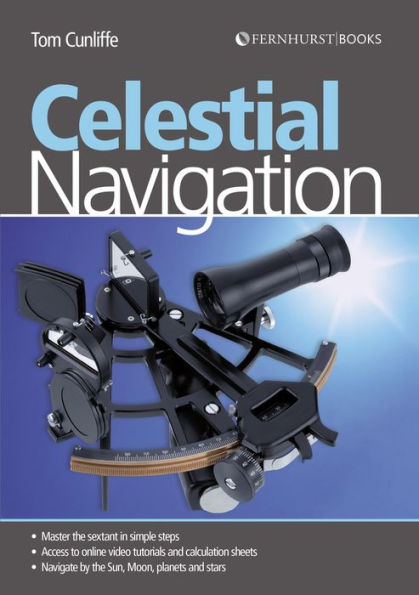Read an Excerpt
We all learn as infants that the Earth revolves once a day and that the stars remain, to a greater or lesser extent, stationary. We also become aware that the Moon is in our own back yard, that the stars are plunging through space at various mind - boggling distances from us and that the Earth is travelling on an annual voyage around the Sun. Whether or not all this is true is of no relevance to the practical astro navigator.
For our purposes the Earth, otherwise known as the terrestrial sphere, may be taken to be a perfectly round ball swimming in a vacuum at the centre of the known universe. At the outside of the vacuum, an indeterminate but fortunately irrelevant distance away, is a further big ball which marks the perimeter of the universe. This ball is known as the celestial sphere. For our purposes all the heavenly bodies move in their courses on its inside surface, and its centre coincides exactly with the centre of the Earth.
THE TERRESTRIAL SPHERE
Any location on the Earth’s surface can be expressed in terms of latitude and longitude.
Meridians of longitude
To define our position on the globe in an east – west direction we make use of the meridians of longitude. These are great circles which converge at the poles of the Earth, a great circle being the line described on the Earth ’ s surface by a plane passing through the centre of the Earth. In the case of a meridian, it is best thought of as what you would see if you pulled a segment out of a perfectly round orange. The segment starts and ends at the opposite poles of the orange. Its curved surface is the shortest distance between them on the surface of the orange. This definition becomes more important when great circle sailing is discussed later. For now, it is enough that a meridian runs direct from pole to pole on the surface of the terrestrial sphere.
Position is measured in terms of angular distance (see below) east or west of the zero or datum meridian.
This passes through the Greenwich Observatory in England, and is known as the Greenwich Meridian. Those in denial of Britain’s contribution to astronomy and longitude can choose to call this the International Reference Meridian, or the Prime Meridian.
Longitude is measured in degrees east or west of Greenwich until east and west meet somewhere in the remote Pacific Ocean.



